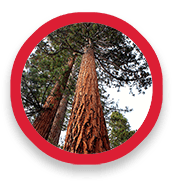SCIENCE EXPERIMENTS FOR KIDS
HOW TO TEST THE STRENGTH OF SHAPES
With this fun experiment, your kids will see that strength comes in all shapes and sizes
Your kids are probably familiar with the empowering story of “The Little Engine That Could.” But what about the little shapes that could – hold up a stack of books?
In this exercise, your child will learn how to test the strength of different shapes. By making their own shapes and then balancing books on top of them, they can observe how strong each shape is. After they’re done, they’re going to feel just as determined as that little engine. Or maybe even that little square.
GATHER THIS:
- Paper
- Tape
- Books for weight
THEN DO THIS:
- Brainstorm some different shapes.
- Fold several piece of paper in half length-wise.
- Roll, fold, bend, each sheet of paper into different shapes.
- Stack one book at a time on top of each shape.
- Try as many different shapes as you can make!
ASK THIS:
- Which shape holds the most books?
- How does the paper thickness influence the performance?
- How does the number of sides of the shape effect the performance?
- Does it matter how you tape the paper together?
- Does it matter if the paper overlaps at the seam?
- What shape would you use to hold up a tower?
- What shapes do you notice in structural supports?
WHAT IS HAPPENING?
Some shapes are stronger than others in different applications. Spheres are really strong shapes when under pressure on all sides by a gas or liquid. When a force is applied at the tip, a triangle is a strong shape as it disperses the load across the bottom edge. Engineers utilize shapes like triangles to support a tremendous amount of weight in structures such as buildings and bridges. There is also evidence of strong shapes in nature. The cylindrical shape of some of our load-bearing bones and the shape of tree trunks are examples.
WHAT THIS TEACHES:
Skills: Scientific process, stacking, balancing, observation skills
Themes: Shapes, geometry, structural engineering
Join the CuriOdyssey Community
LOCATION
1651 Coyote Point Drive
San Mateo, CA 94401
Ohlone Land Acknowledgement
650-342-7755
[email protected]
CuriOdyssey is a 501(c)(3) nonprofit, Tax ID 94-1262434




